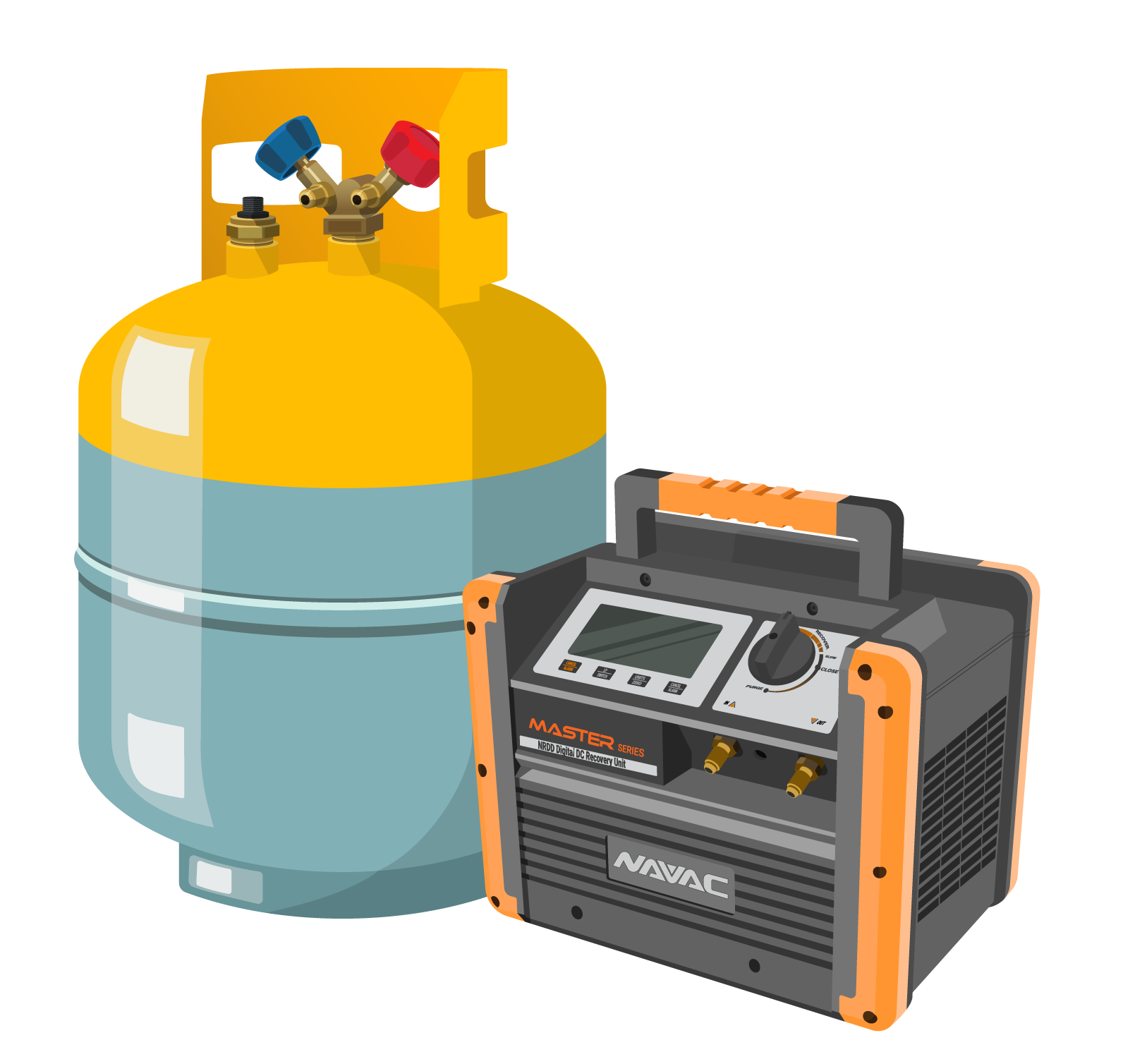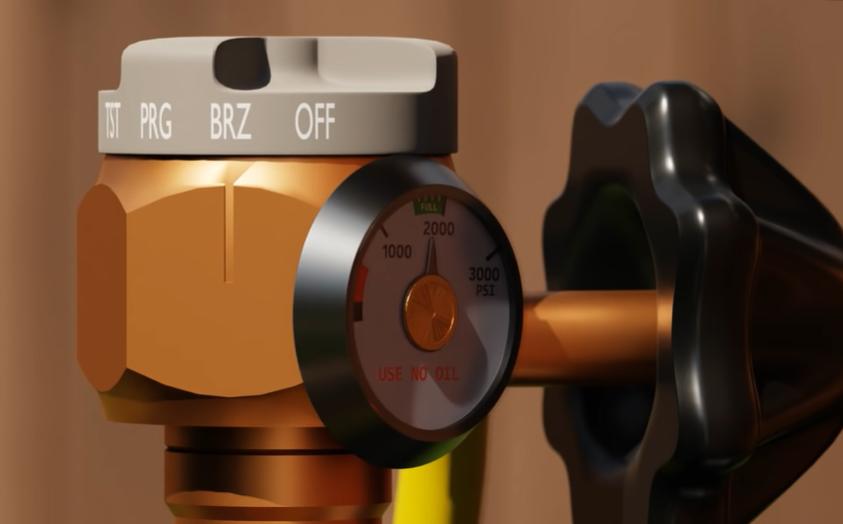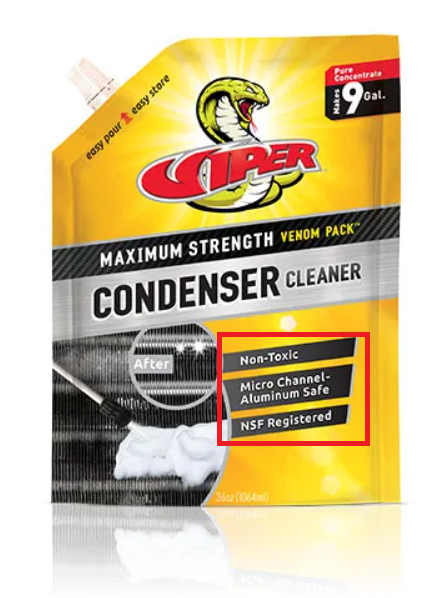Get Tech Tips
Subscribe to free tech tips.
What You Need to Know About Microchannel

Microchannel is a coil type used in many evaporator and condenser coils. You can easily identify it by its flat tubes, and its fins look like waves between the tubes. The technology was developed for use in the automotive industry and is used for radiators and automotive A/C condenser coils.
These coils are made of all aluminum, and people use them because of their superior heat transfer; these coils have greater surface contact between the refrigerant and the metal. They also have a lighter weight and smaller refrigerant charge.
These coils have come under a lot of criticism from technicians due to an undisputed high failure/leak rate of the condenser coils in some systems. Some have felt these failures occur due to inherent issues with the design, while others have stated that the leaks were due to specific manufacturing issues on a few coils and that these issues are largely in the past. No matter how you feel, it's likely that microchannel coils are here to stay due to the increased heat transfer efficiency and decreased weight. Here are a few things you need to know when installing and servicing microchannel coils.
Don't Pump it Down

Microchannel condensing units are not sent with the full system charge; HVAC professionals must add the charge according to the manufacturer's specs, even with a short line set (say, 15′). Of course, if you have long lines, you'll have to add more charge carefully.
You cannot and must not attempt to pump down a system with a microchannel condenser. Otherwise, you risk causing a catastrophic failure of the coil.
Instead, you must recover the charge when making a refrigerant circuit repair and then carefully weigh in the proper charge after the repair is made.
Use Proper Brazing/Evacuation/Refrigerant Practices

It's right in the name: “micro” channel. The flat tubes have tiny refrigerant channels in them, and they are susceptible to blockage by any solid contaminants in the system.
To prevent contaminants from getting into the system, make sure to flow nitrogen while brazing, install a new liquid line drier after making a refrigerant circuit repair, and pull a proper vacuum (as always). You also need to take extra care to keep shavings out of the system when cutting and reaming.
Also, keep tubing ends and hoses away from dirt and debris. For example, if you replace a compressor, anything allowed to get in your pipework will hit the condenser coil before it ever reaches the liquid filter/drier and has the opportunity to clog part of the microchannel coil.
Wash Carefully

Most manufacturers advise against using any cleaner on microchannel coils to avoid damage. Either use a garden hose or low-pressure “fan” pattern pressure washer less than 100 PSI. If you must use a cleaner, be sure to use one approved for use on microchannel. In any case, work carefully. The refrigerant channels go all the way to the edge of the coil and can be easily damaged if impacted.
The Charge is CRITICAL

When charging microchannel, you will want to follow manufacturers' specs and weigh in the charge whenever possible. If you see low suction, don't start dumping in charge until you are certain it is a charge issue and not an airflow issue or a restriction. Subcooling on microchannel systems tends to be more erratic due to the lower volume of the condenser coil.
Install Thoughtfully
Many manufacturers will swear that microchannel coils are just as resilient as tube and fin coils. Based on my personal experience, I would suggest taking greater care to protect microchannel coils. It may make sense to keep microchannel coils away from areas of the lawn that will have equipment going near the unit and possibly shooting debris into the surface.
When a microchannel condenser leaks, it is often fairly evident by the oil stain that appears on the surface. These leaks can be quite small because of the channels, so if you see a telltale oil spot, it is best to investigate.
Repair
I confess: I have never attempted a microchannel repair myself, but there are many techs who claim to do it regularly. Here is a video showing it being done:
So, take extra care when installing and servicing microchannel systems when cleaning, charging, and repairing.
—Bryan











Comments
Good article! Most technicians still have just a little experience with microchannel coils. Moreover, technology progresses and it looks like more and more manufacturers use MCHE for condenser applications. Here are some more info related to microchannel technology and applications: https://www.kaltra.com/single-post/2018/04/09/microchannel-heat-exchangers
Chilled water coils based on MCHE is also available now by a number of manufacturers. Please share more resources on MCHE if you have. Thanks!
Good article! Most technicians still have just a little experience with microchannel coils. Moreover, technology progresses and it looks like more and more manufacturers use MCHE for condenser applications. Here are some more info related to microchannel technology and applications: https://www.kaltra.com/single-post/2018/04/09/microchannel-heat-exchangers
Chilled water coils based on MCHE is also available now by a number of manufacturers. Please share more resources on MCHE if you have. Thanks!
Another major advantage of the topidex expandable garden hoses is that they are available in different lengths. The flexible hoses are available in both long and short lengths which make them convenient to be used in a variety of situations such as large or small patios, covered porch, driveways and pools.
https://bestproductlab.com/tag/best-expandable-hose-consumer-reports/
Another major advantage of the topidex expandable garden hoses is that they are available in different lengths. The flexible hoses are available in both long and short lengths which make them convenient to be used in a variety of situations such as large or small patios, covered porch, driveways and pools.
https://bestproductlab.com/tag/best-expandable-hose-consumer-reports/
Are they used in condenser and evaporator coils or condenser coils only?
Are they used in condenser and evaporator coils or condenser coils only?
Right out of HVAC school in Ohio and only doing part time work so far, we have had trouble with microchannel coils our first and fourth installs. Both installs were nearly identical, in a mobile home with a microchannel coil inside and traditional outside unit and TXVs on both ends. Our distributor speced the coils and we researched the finer points of microchannel before proceeding and proceed we did. Everything really went great, charging via subcool with the tables provided and the AC performance was great. In heat mode is where our problems began. The #1 install, for a fellow classmate we graduated with, found out that the head pressure was hitting the high limit switch so often that his switch broke sometime over the winter. He must have survived on heat strips and fond out in the spring when his AC didn’t work. The #4 install we just did had the exact same problem so we figured we must have made some mistake and double and triple checked everything and anything we could find. After removing a Ventilaire duct that was essentially a big leak bypassing the coil, our head pressure spiked within minutes of startup. To speed the story up, I came across a Heat Pump Mild Weather Control Kit from the coil manufacturer that cuts the outdoor fan at 575psig (just below the high limit switch) and cuts it back in at 450psig. Another vendor makes one that works by external ambient temp only. We have yet to install it but are planning to do so. Besides the existence of the kit, I have found one company referencing the need to do so, but their video explanation is ‘private’ and not viewable. One other bit of information is that I noticed a big difference in temperature running my handometer over the coils so I put temp probes on them and found 65.6ºF in the front and 128.3ºF in the back. Not really a coil, these channels seem to run in parallel, front to back. This 63-degree difference made a 30-degree delta T at the register, while it lasted. In AC mode the coil delta T was only 37.9-41.5, a very small difference. We are hoping that the control kit will be our last trip out there, but if it helps, I’d love to visit the unit on a very cold day this winter and a hot day in the summer to check up on it.
Right out of HVAC school in Ohio and only doing part time work so far, we have had trouble with microchannel coils our first and fourth installs. Both installs were nearly identical, in a mobile home with a microchannel coil inside and traditional outside unit and TXVs on both ends. Our distributor speced the coils and we researched the finer points of microchannel before proceeding and proceed we did. Everything really went great, charging via subcool with the tables provided and the AC performance was great. In heat mode is where our problems began. The #1 install, for a fellow classmate we graduated with, found out that the head pressure was hitting the high limit switch so often that his switch broke sometime over the winter. He must have survived on heat strips and fond out in the spring when his AC didn’t work. The #4 install we just did had the exact same problem so we figured we must have made some mistake and double and triple checked everything and anything we could find. After removing a Ventilaire duct that was essentially a big leak bypassing the coil, our head pressure spiked within minutes of startup. To speed the story up, I came across a Heat Pump Mild Weather Control Kit from the coil manufacturer that cuts the outdoor fan at 575psig (just below the high limit switch) and cuts it back in at 450psig. Another vendor makes one that works by external ambient temp only. We have yet to install it but are planning to do so. Besides the existence of the kit, I have found one company referencing the need to do so, but their video explanation is ‘private’ and not viewable. One other bit of information is that I noticed a big difference in temperature running my handometer over the coils so I put temp probes on them and found 65.6ºF in the front and 128.3ºF in the back. Not really a coil, these channels seem to run in parallel, front to back. This 63-degree difference made a 30-degree delta T at the register, while it lasted. In AC mode the coil delta T was only 37.9-41.5, a very small difference. We are hoping that the control kit will be our last trip out there, but if it helps, I’d love to visit the unit on a very cold day this winter and a hot day in the summer to check up on it.
I’ve discovered that a “Heat pump mild weather control kit” is supposed to help mitigate high-limit switch cutout inducing high pressures that seem to be an issue with microchannel coils for heating mode on 50ºF outdoor weather. Mild weather does not seem to affect all system (my home included) but after experiencing this on both units of which there is microchannel on the inside, I’m going to give it a try after everything else so far has failed to help.
I’ve discovered that a “Heat pump mild weather control kit” is supposed to help mitigate high-limit switch cutout inducing high pressures that seem to be an issue with microchannel coils for heating mode on 50ºF outdoor weather. Mild weather does not seem to affect all system (my home included) but after experiencing this on both units of which there is microchannel on the inside, I’m going to give it a try after everything else so far has failed to help.
Hello. Could you share your opinion for using these coils in AHU? is this solution justified? what is the maximal cross section for such coils?
Hello. Could you share your opinion for using these coils in AHU? is this solution justified? what is the maximal cross section for such coils?
To leave a comment, you need to log in.
Log In